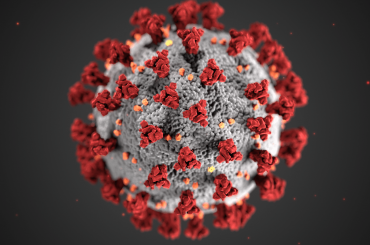This story from the archives is from the June 2015 edition of Australian Aviation, when Jordan Chong visited the Australian Air Force Cadets Aviation Centre at Bathurst Airport.
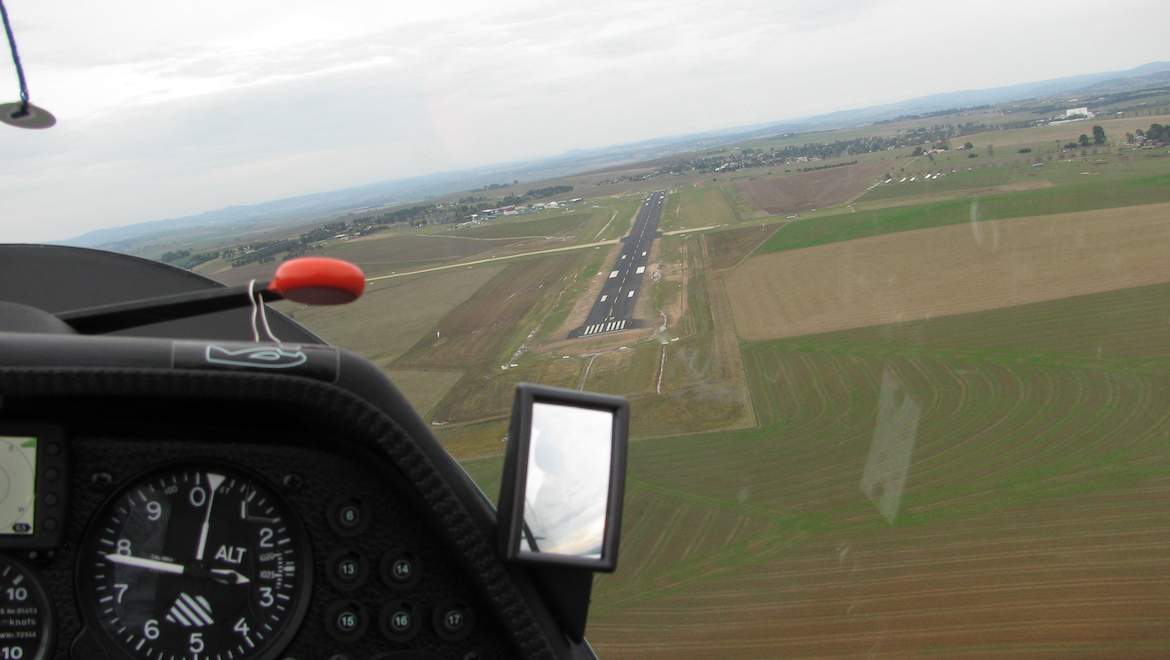
Under cloudy skies, a group of Australian Air Force Cadets (AAFC) rolls an ASK‐21 Mi glider, VH‐NQS, out onto Runway 35 at Bathurst Regional Airport.
Once in position, a cable attached to the Piper Pawnee PA‐25 a short distance in front is clipped onto the front of the glider, and after the final checks are made the all‐clear is given.
The Pawnee tug begins its takeoff roll and is quickly airborne, lifting VH‐NQS to about 2,500ft above ground level.
At this point, the glider releases the tug, leaving this reporter to experience his inaugural unpowered flight in the more than capable hands of instructor Air Commodore David Pietsch.
Students sit in the front of the tandem two‐seater ASK‐21, with the instructor in the rear seat.
Basic instrumentation comprises an airspeed indicator, an altimeter, variometer, radio and GPS navigation unit. Controls comprise the control stick, rudder pedals and a handle for the speed brakes.
While gliders can stay airborne for hours as rising hot air, called thermals, provide the necessary lift, on the day Australian Aviation visited Bathurst the sun was nowhere to be seen.
Although that meant no lift, it failed to detract from the experience, with the 23‐minute flight offering a fantastic introduction to what advocates of gliding describe as the purest form of flying.
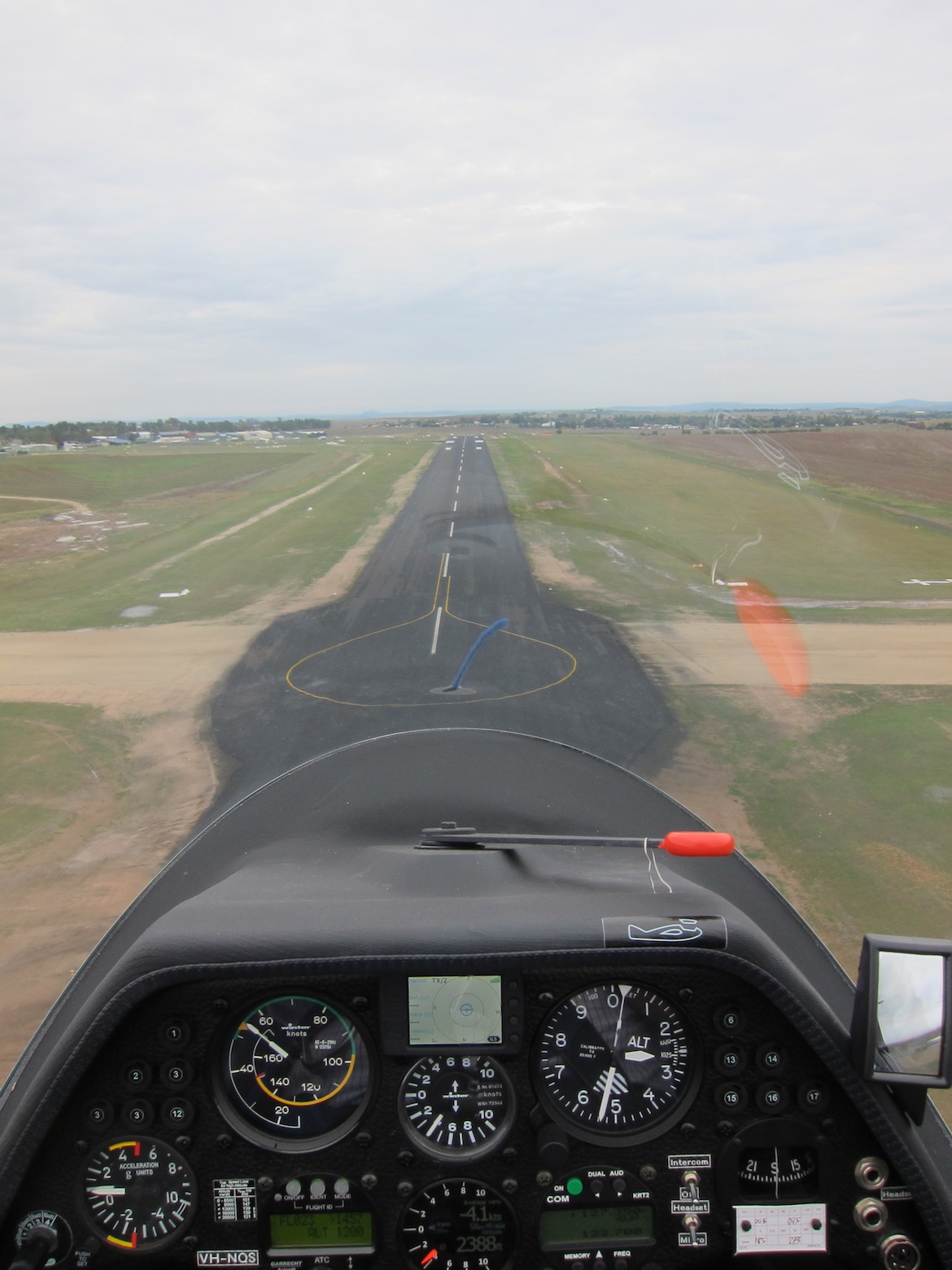
AAFC Aviation Centre at Bathurst Airport
Bathurst Regional Airport is home to the Australian Air Force Cadets (AAFC) Aviation Centre, which opened in April 2014.
The facility has six gliders on site, four DG‐1001 Club soaring gliders and two self‐launching ASK‐21 Mi aircraft, which takeoff and land from a grass strip to the west of the main 17/35 asphalt runway.
These are part of the Royal Australian Air Force’s (RAAF) purchase of 22 new gliders – 11 ASK‐21 Mi and 11 DG 1001 Club aircraft – that have been delivered to various locations around Australia for the AAFC’s 7,000 participants to experience the joys of flight.
Chief of the Air Force Air Marshal Geoff Brown, who is a veteran glider pilot, says the new gliders were a “small investment” to make to provide more opportunities for cadets to undertake flying activities.
“Our overall aim is to give three or four aviation experiences to all our cadets over a 12‐month period, as well as the scholarships, so that they all at least get a taste of flying an aircraft,” AIRMSHL Brown tells Australian Aviation.
“They do rifle shooting, they do bivouacs, they do promotion courses, but Air Force is about flying aeroplanes and that’s the reason we wanted to give it the boost that we have.”
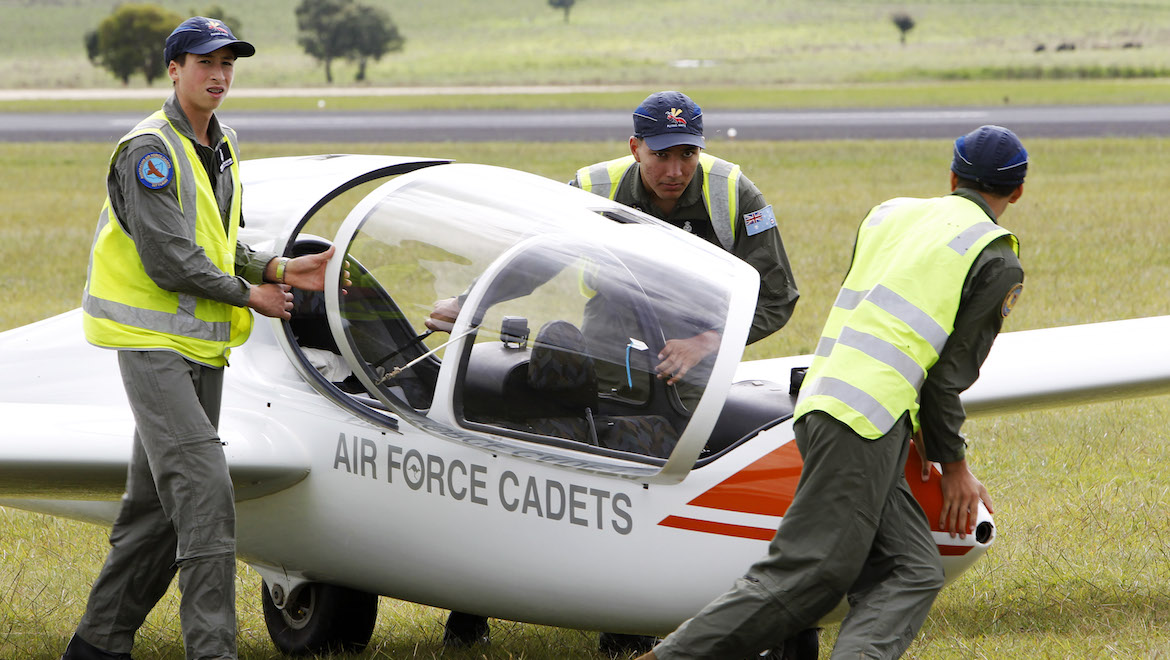
AIRMSHL Brown, who is often mobbed by cadets when he attends one of their events, joined the Air Training Corps in his early teens and stayed for about five years.
Thanks to a gliding scholarship, which the RAAF reintroduced for both gliding and powered flying in 2009, AIRMSHL Brown says he qualified to fly solo before he could drive a car.
And although his day job has kept him very busy, AIRMSHL Brown says he tries to make time to go gliding.
“I would like to do a lot more but over the last . . . 15 years I normally go to the national championships for about two weeks and that’s normally about the majority of gliding that I do,” AIRMSHL Brown, who finishes up his four‐year tenure as CAF in early July, says.
“I do about 50 to 60 hours over that two weeks and if I go gliding two or three times during the year other than that I consider it a good year.
“I do a lot of cross‐country flying. In competitions, what they do is set tasks between 300 and 500 kilometres and you actually get to race around those tasks, so I quite enjoy the competitive aspects of it.
“It is a battle not only against your other competitors but you’ve also got to be able to read the weather and make the best of the weather as well. I suppose that’s why I like it.”
The AAFC facility at Bathurst hosts week‐long camps during the school holidays, as well as weekend trips for AAFC groups throughout the year. The camps are extremely popular and are often over‐subscribed, says Squadron Leader (AAFC) Bill Gleeson‐Barker, the senior aviation officer at 3 Wing and chief flying instructor at 327FLT.
In addition to the actual flying, cadets also develop personal skills and meet fellow flying enthusiasts from around the country. Moreover, they get to ask their flying instructors, who often have commercial and military aircraft backgrounds, questions they may have about aviation as a career.
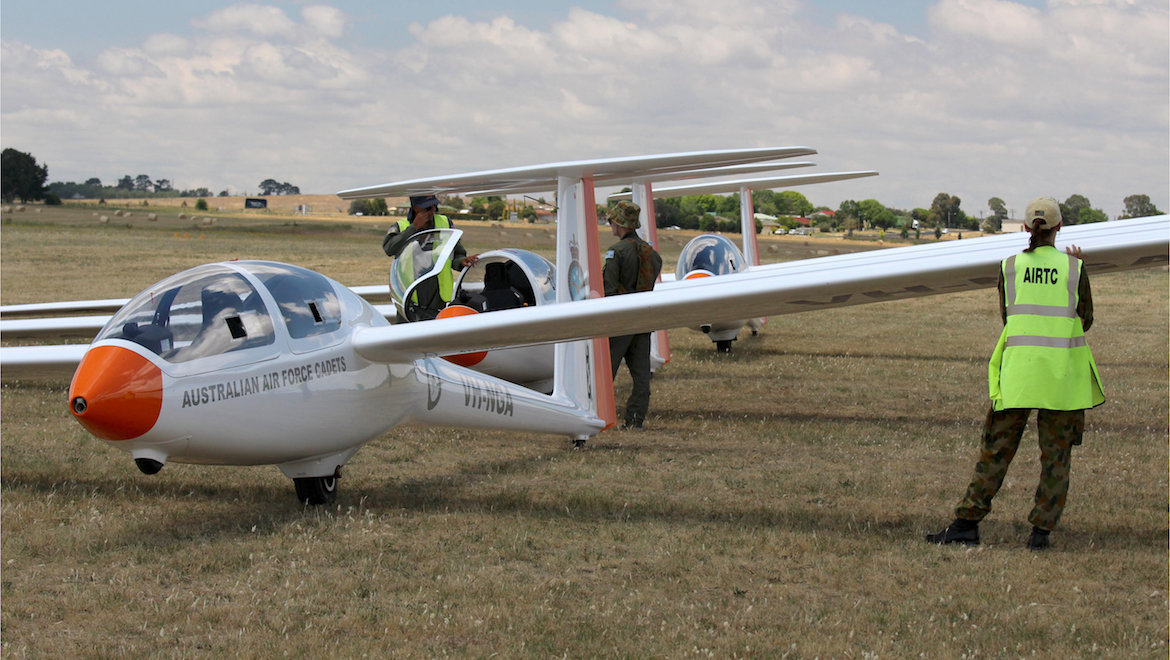
Gleeson‐Barker is also keen to stress the teamwork aspect of gliding.
“Gliding is very team oriented,” he says.
“It is not like powered flying where you go and fly for an hour and then go back into the classroom and study your books and have a coffee.
“On the air field it is very manual, so when the glider lands a team will come out and push it off the runway. The cadets are on the airfield all day.”
Australian Aviation’s visit coincided with the last full day of a week‐long school holiday camp. Unfortunately, the gliders were stuck in the hangar rather than being up in the air because of heavy rain that had fallen all morning and the low cloud cover surrounding the airport.
But there was no shortage of activity on the ground among the 20‐odd participants on site that morning. Everyone, from the junior cadets to the highest ranked participants, was busy looking after these precious aircraft, furiously removing dirt and dead insects from the windscreens, cleaning the interiors and wiping down the wings, among other general maintenance tasks.
And when the aircraft was taken out for a short afternoon flight, thanks to a break in the weather, a team of young men and women diligently got VH‐NQS prepared, taping up the wings and performing the final checks ahead of the eventual takeoff.
“Most people do treat gliders that way because you can’t afford dirt, bugs or anything because that decreases your performance,” AIRMSHL Brown says.
“That’s an obsession we’ve all got if you’ve got a glider.
“And any leakage of air from different parts and the way the fuselage is pressurised all have the potential to decrease your glide angle so you get quite precise about that sort of thing.”
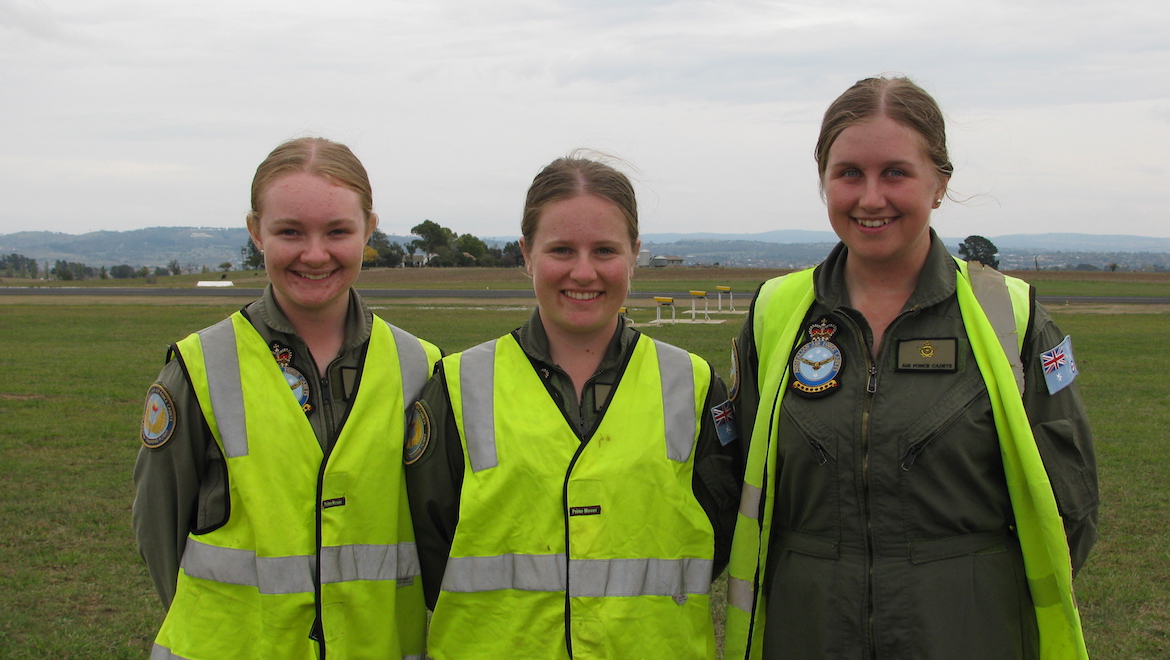
38 per cent of the 7,000 AAFC members are girls and gliding is a great way to get more women involved in flying. (Australian Aviation(
From student to teacher
Cadet Flight Sergeant Stephanie Ehret, who began attending AAFC camps from the age of 13 and four‐and‐a‐half years later is now an instructor, says a good first flight was just the spark that prompted her to seek a career in aviation.
“Learning to fly, your very first flight is one that you are always going to remember,” Ehret says.
“It is really important, in part as they are probably asking themselves if they want to do this as a career. If they really enjoy the flight it is probably going to be a yes.
“I remember my first flight and it was then I just decided that it was what I wanted to do because it was just the most enjoyable experience I’d ever had.
“Whatever career I end up going into, that can be with defence, that can be with civilian aviation, whatever it is going to be I am going to be happy because I am going to be flying planes.”
Ehret is the first female cadet instructor within 3 Wing AAFC, having qualified as an Air Experience Instructor meaning the 18‐year‐old can take up first‐time fliers in a glider.
And with a recreational pilot’s licence also part of her qualifications, Ehret also pilots the Pawnee that takes the gliders up into the air and is keen to maintain links with the AAFC.
“I still want to come back here and fly with the cadets because they are a really great organisation and I think it is fantastic flying gliders,” Ehret says.
Ehret is currently in the first year of a psychology degree at Macquarie University in Sydney, with a focus on aviation‐related matters.
“Psychology can lead into aviation human factors and risk management and that is what I was looking at in terms of a degree to complement all the flying I have done and the flying I still want to do,” Ehret says.
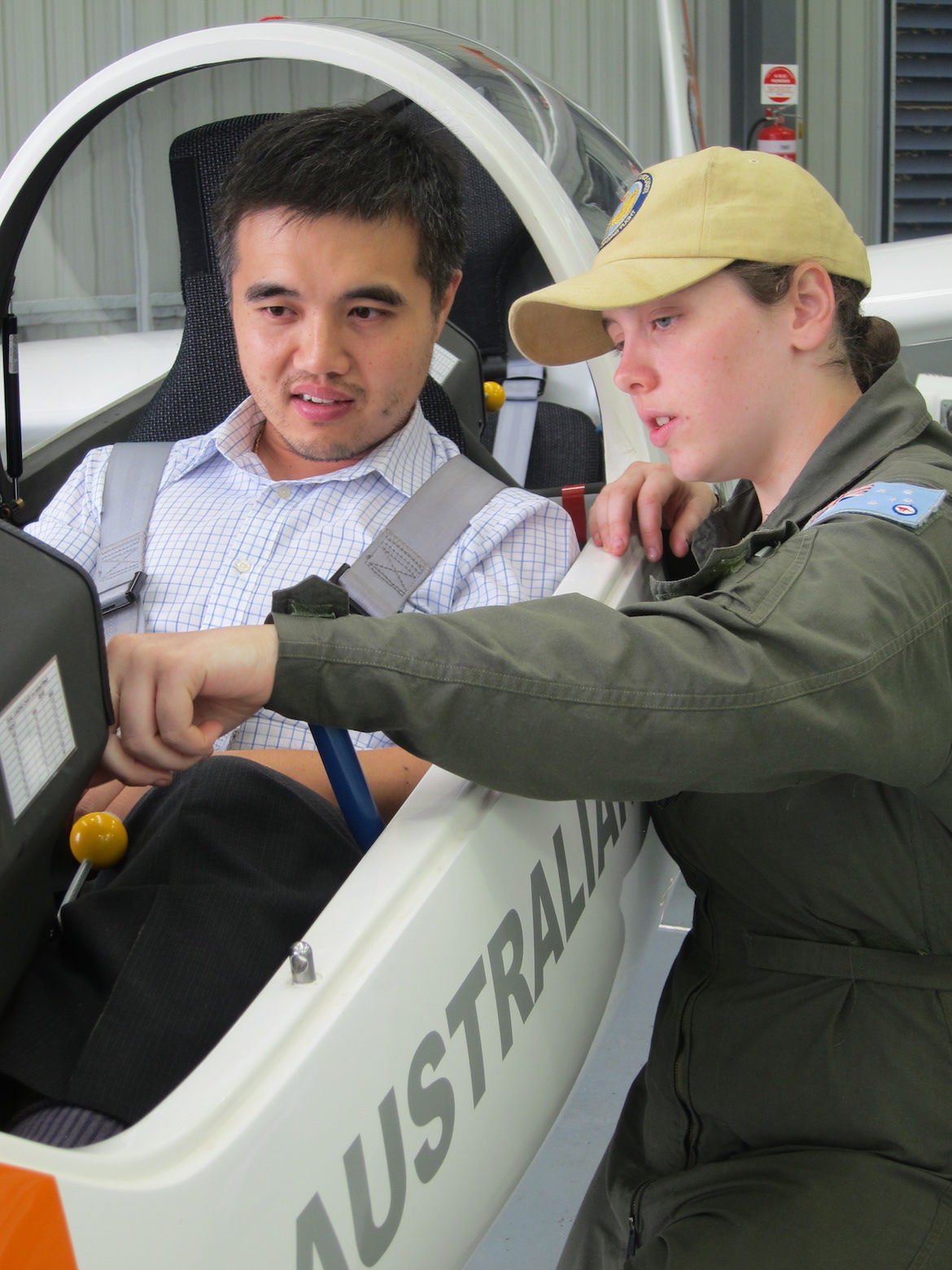
Similarly, Cadet Under Officer Sam Quirke got the taste for gliding during a trial flight at RAAF Base Richmond and has been making the trip from Canberra to attend camps such as these in Bathurst for the past four years. A scholarship helped support his development, allowing him to graduate to solo.
“I keep coming back because it is an amazing flying operation that we have here, probably the best in the country,” Quirke says.
“I’d like to give back to the organisation and I’d like to keep involved with cadets flying as a staff member and if I do choose aviation as a career it will be because of what I started here.”
The likes of Ehret and Quirke are just two of the many examples of people coming through the AAFC and help explains why the RAAF senior leaders from the CAF down are so keen support them.
AIRMSHL Brown is among many in the senior leadership of the Australian Defence Force who have been part of the cadet corps, which includes the Chief of the Defence Force Air Chief Marshal Mark Binskin.
“Not only was I an ex‐Air Training Corps cadet but so is the CDF,” AIRMSHL Brown says.
“I think the cadets represent about 30 per cent of the Australian Defence Force Academy (ADFA) intake, not necessarily Air Force, there are Army, Navy and Air Force.
“They are roughly 20 per cent of our intake and ex‐cadets make up about 50 per cent of our senior leadership team. That is pretty astounding.
“Anytime I have had anything to do with our cadets I have always been pretty impressed with the calibre of kid that is out there.”
Australian Aviation’s instructor on its test flight, Air Commodore Pietsch, adds: “In this environment, which is quasi military, they get a very solid foundation right from the word go on cultures, attitudes and approaches to aviation, whereas in some other organisations it takes them a long time to start to realise what those issues are.” [vc_gallery interval=”0″ images=”73658,73661,73660,73659,73662,73664,73663,73665,73655,73667,73666,73668″ img_size=”750×420″ title=”Australian Aviation goes gliding with the Australian Air Force Cadets”]
AAFC demand rising
AIRMSHL Brown has plans to grow the membership of the AAFC to 10,000, from 7,000 currently.
He is hopeful that the AAFC can recruit enough volunteer instructors to support that growth.
“We just need to get the aeroplanes out there, make sure we have enough gliding instructors really to give every cadet around Australia at least three or four flying experiences during the year,” AIRMSHL Brown says. “That’s my overall aim.”
“I think the demand is out there.
“It’s a purely volunteer operation really. It does rely on people willing to give up a fair bit of their holidays to come and instruct the cadets.”
Although these new aircraft have been purchased by the military, they have been given civilian VH‐ registrations and are operated under the Gliding Federation of Australia (GFA) manual of standard operating procedures.
“All we do is keep an overview of how that operation is,” AIRMSHL Brown explains.
“The GFA has been well established since post‐WW2 running gliders in Australia. They have done a pretty good job over that period of time.
“If we want to introduce more aviation into the cadets I wanted to assure myself of the airworthiness of the whole system so the easiest way to do that was to actually get new gliders which you know the history of and then you can track the maintenance of them.”
AIRMSHL Brown describes the sport as the purest form of flying.
“One of the problems is that powered flying has become so expensive that it is really out of reach for most normal people these days,” AIRMSHL Brown says.
“I actually think gliding is, and I have a bias of course, but I think it teaches the fundamentals of flying better than in power flying plus it is a much less expensive way to learn to fly.”
Cadet Flight Sergeant Ehret agrees.
“Flying gliders, it is really pure technique flying and really enjoyable,” she says.
“It is real flying, just like any powered plane would be. The only difference is that you don’t have the engine so you have to use the weather.
“It really teaches you the finesse, the fine tuning and technique of precision flying.”
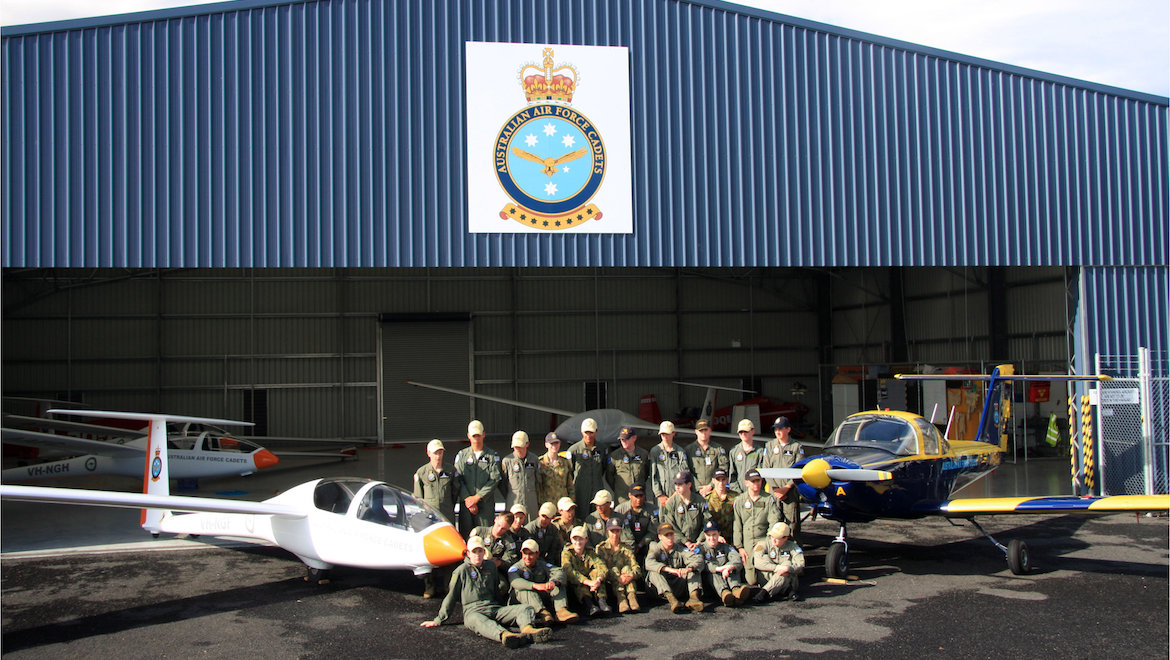
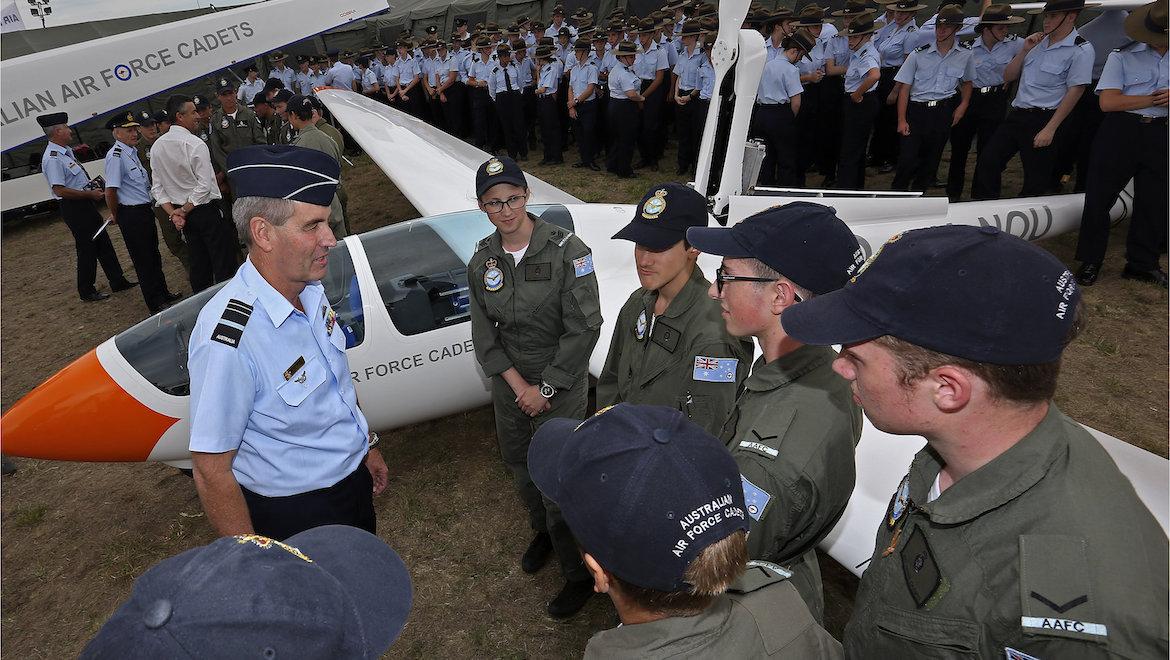
Instructor Allan Buttenshaw is just the type of person the AAFC hopes to attract more of if it is to meet the 10,000 goal AIRMSHL Brown is aiming for.
A former RAAF and Qantas pilot, Buttenshaw has been a long‐time volunteer instructor and says there is something special about seeing someone who has never flown before develop their skills to eventually graduate to solo.
“You come down here and it completely reinvigorates your belief in the future of Australia,” Buttenshaw says.
He is also full of praise for the new DG‐1001 and ASK‐21 Mi aircraft, which he says are suited for both experienced and beginner glider pilots.
“When you want to go cross‐country it is slippery, when you want to teach approach it is good to teach approach on and that is a rare combination,” Buttenshaw says.
“They are a great aeroplane. It is really a pleasure to teach with.”
More information about the AAFC can be found on its website: www.aafc.org.au
VIDEO: A look at the AAFC gliding course at Bathurst in this 2016 video from Bill Gleeson-Barker’s YouTube channel.
This story first appeared in the June 2015 edition of Australian Aviation. To read more stories like this, subscribe here.

